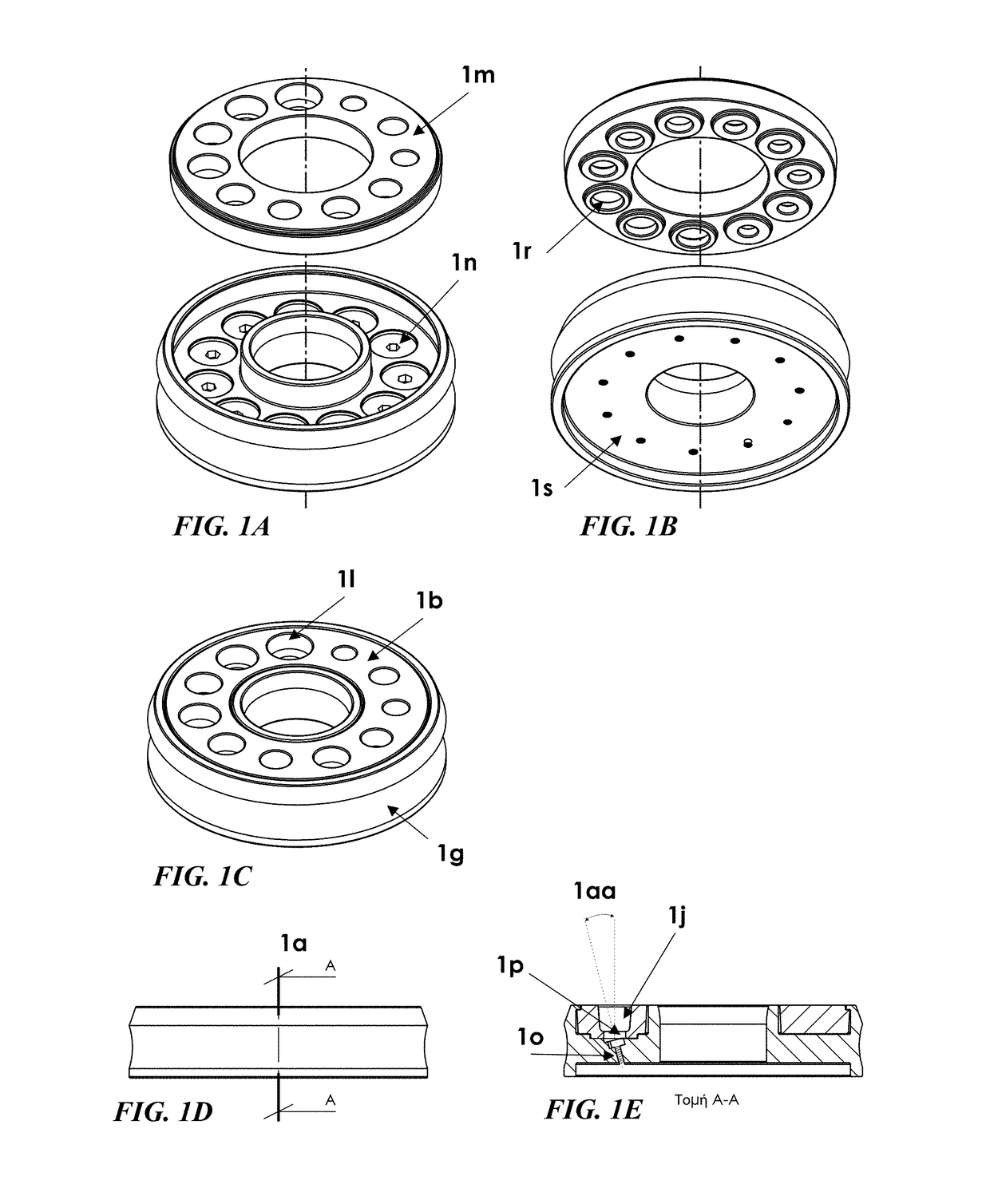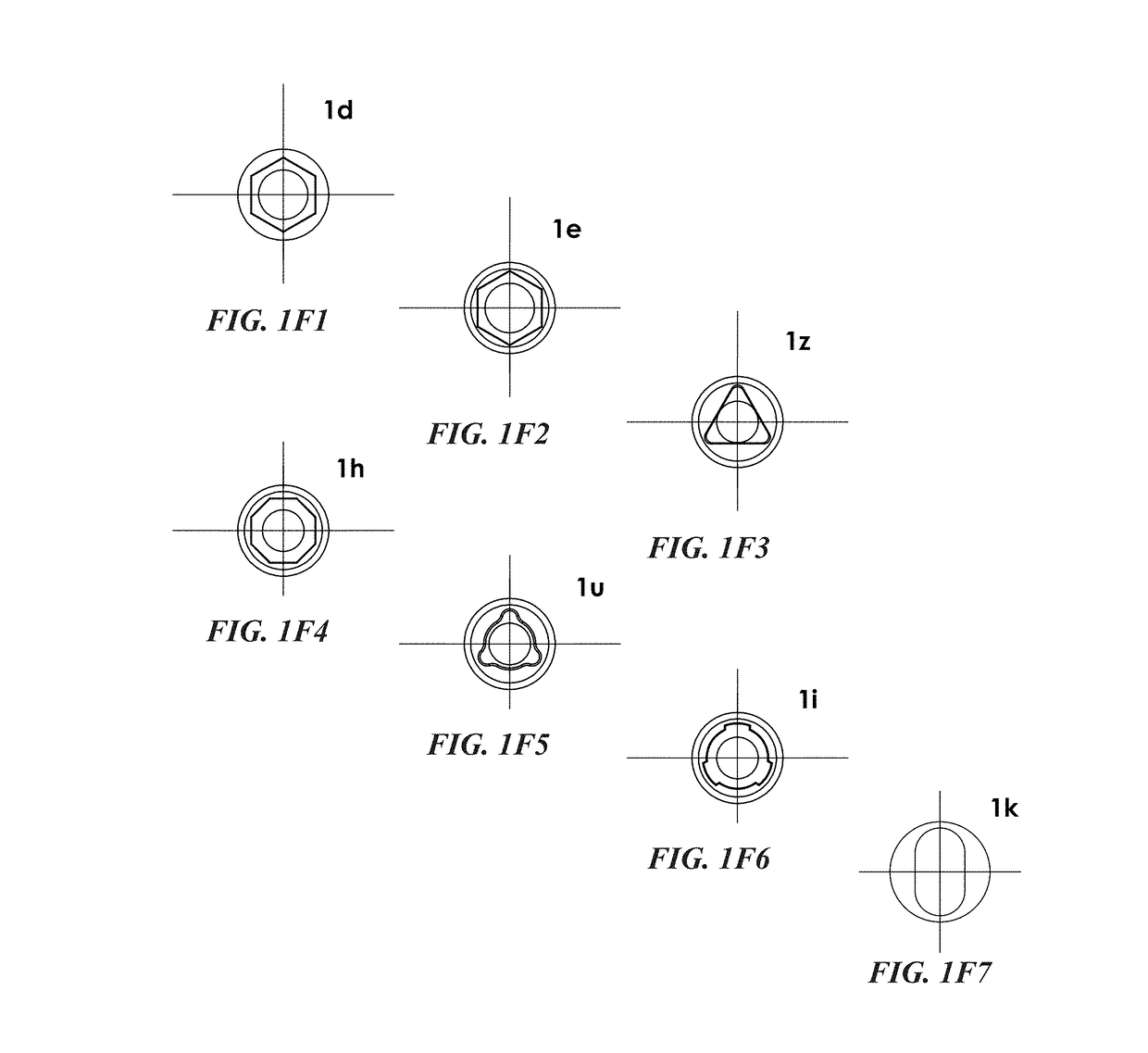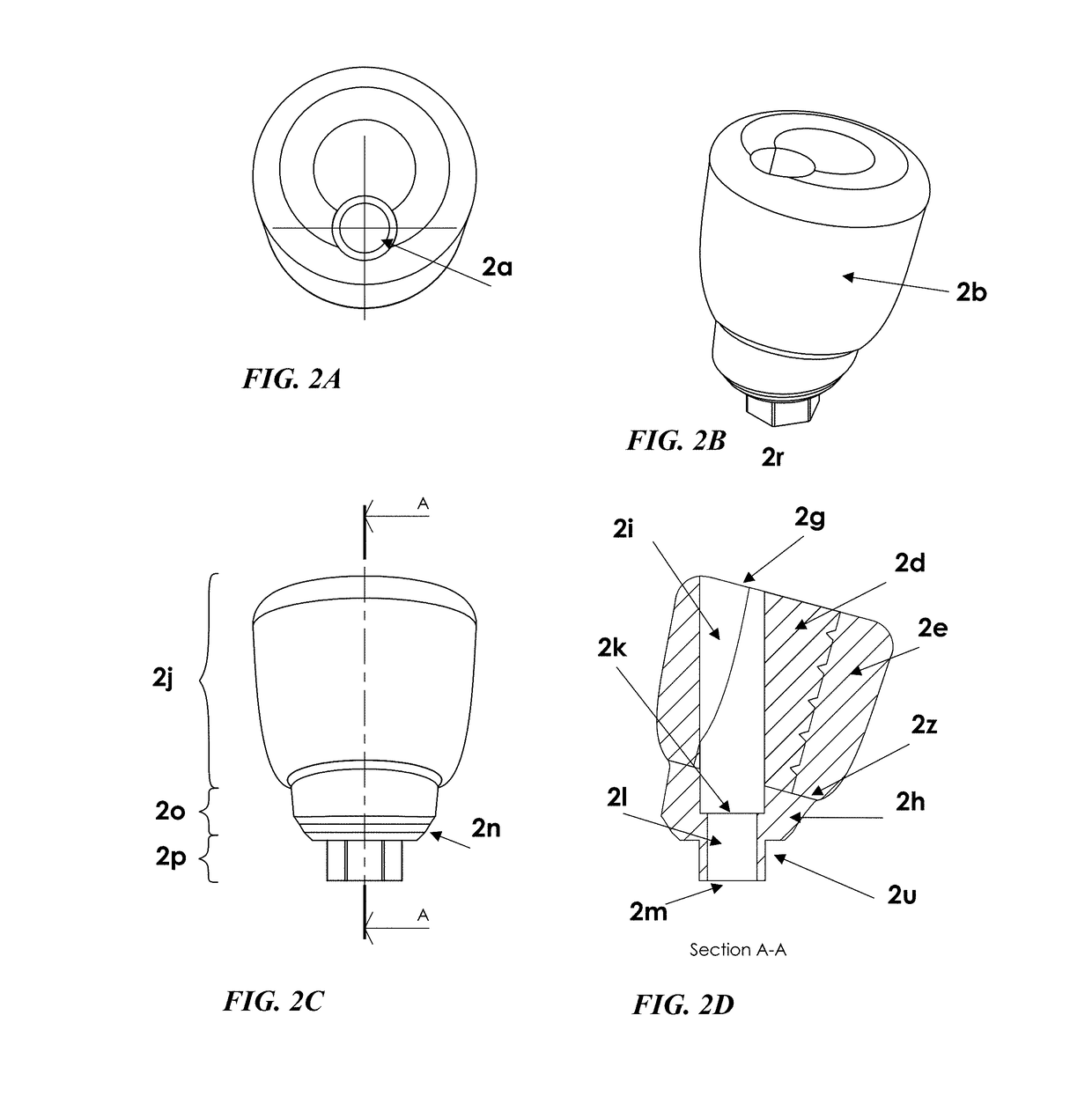Molds for custom dental implant abutments and impression posts
a technology for dental implants and impression posts, which is applied in the field of molds for custom dental implant abutments and impression posts, can solve the problems of not being able to recommend modification, limit the choice of shape, size and material of fabrication, and dentists faced a significant problem, so as to improve the final esthetic and biological outcome, the effect of high polishing
- Summary
- Abstract
- Description
- Claims
- Application Information
AI Technical Summary
Benefits of technology
Problems solved by technology
Method used
Image
Examples
example 1
[0121]In a first example the edentulous space that has been generated from a missing tooth has received an implant that, due to bone width missing from the facial aspect of the alveolar ridge, has been placed by the surgeon with an angulation of twenty degrees towards the longitudinal axis of the final prosthesis that the implant will receive (FIGS. 14A-14D). After the implant placement the surgeon couples with the implant a custom abutment with twenty degrees angulations (14.a) with a short retention screw (9.a). The custom abutment utilized has dimensions that correspond to the available prosthetic space. Specifically the custom abutment is located in the edentulous space in a way that its outer borders are within the line borders of the future prosthesis (20.z) without expanding out of this borders at any point and its custom body has an angulation that is parallel to the one of the longitudinal axis of the final prosthesis (FIGS. 14A-14D, 20A-20B). Following this, the surgeon su...
example 2
[0122]In a second example (FIGS. 18A-18C) a custom abutment (18.b) is coupled with an implant in the mouth (18.g) and the prosthetic rehabilitation of the implant with a temporary prosthesis (18.d) is desired, in order for a transitional loading of the implant to be achieved, before the implant receives its final prosthesis. At this stage the supra-gingival portion of the custom abutment (18.b) is prepped by abrasion from the dentist (18.a), following the same principles as per natural teeth preparation. Thus, the custom modified by abrading abutment now has a shape similar to that of a prepped tooth with supra-gingival prosthetic borders (18.e), while the emergence profile (14.b) of the modified abutment (18.b) remains intact since any abrading of the abutment takes place only supra-gingivally. Following this, the dentist takes an abutment level impression of the modified abutment (18.e) with the same principles as per natural abutment teeth impression. The impression is then sent ...
example 3
[0123]In a third example (FIGS. 21A-21D) in an edentulous jaw two implants have been placed on the right side, which present fifteen degree angulations towards the longitudinal axis of the final prosthesis, while at the left side two implants have been placed which present twenty-five degree angulations towards the longitudinal axis of the final prosthesis. Two custom abutments of fifteen degrees angulations (21.b, 21.bb) are coupled with the two implants of the right side and two custom abutments of twenty-five degree angulations (21.a, 21.aa) are coupled with the two implants of the left side. After the osseointegration period is passed the angulated custom abutments are uncoupled from the implants and four angulated custom impression posts, with corresponding to the abutments angulations and dimensions, replace them (21.d, 21.dd, 21.g, 21.gg). Following this, the dentist takes an implant level impression following the same steps as they have been previously described in the first...
PUM
 Login to View More
Login to View More Abstract
Description
Claims
Application Information
 Login to View More
Login to View More - R&D
- Intellectual Property
- Life Sciences
- Materials
- Tech Scout
- Unparalleled Data Quality
- Higher Quality Content
- 60% Fewer Hallucinations
Browse by: Latest US Patents, China's latest patents, Technical Efficacy Thesaurus, Application Domain, Technology Topic, Popular Technical Reports.
© 2025 PatSnap. All rights reserved.Legal|Privacy policy|Modern Slavery Act Transparency Statement|Sitemap|About US| Contact US: help@patsnap.com



